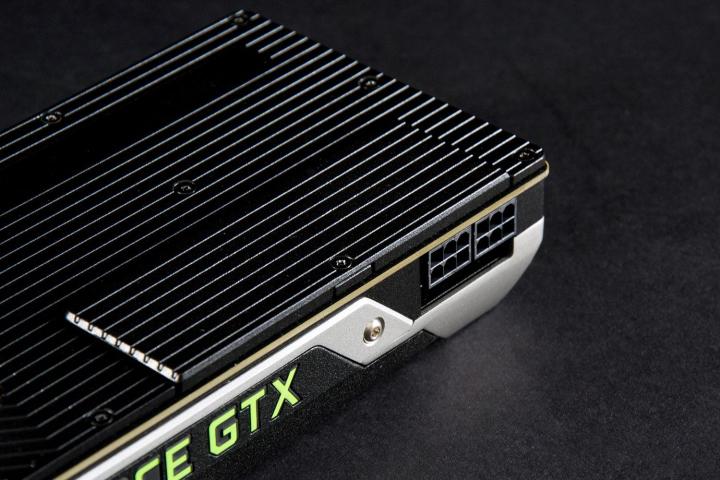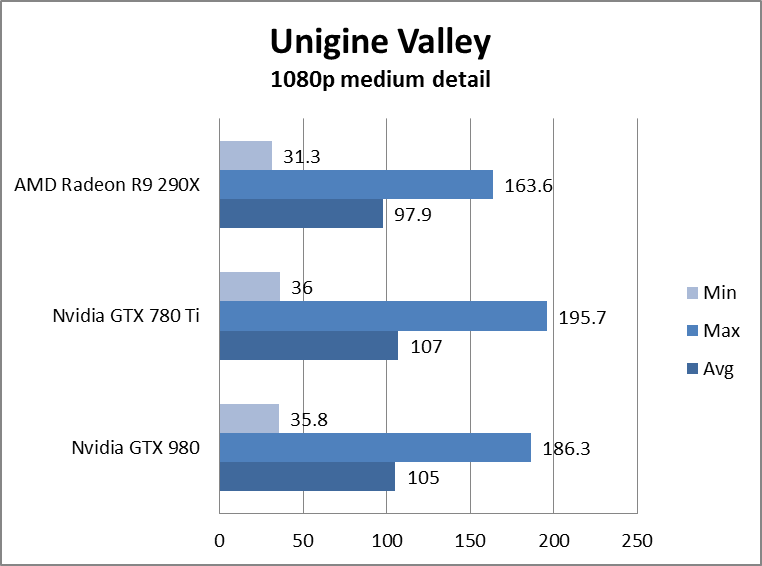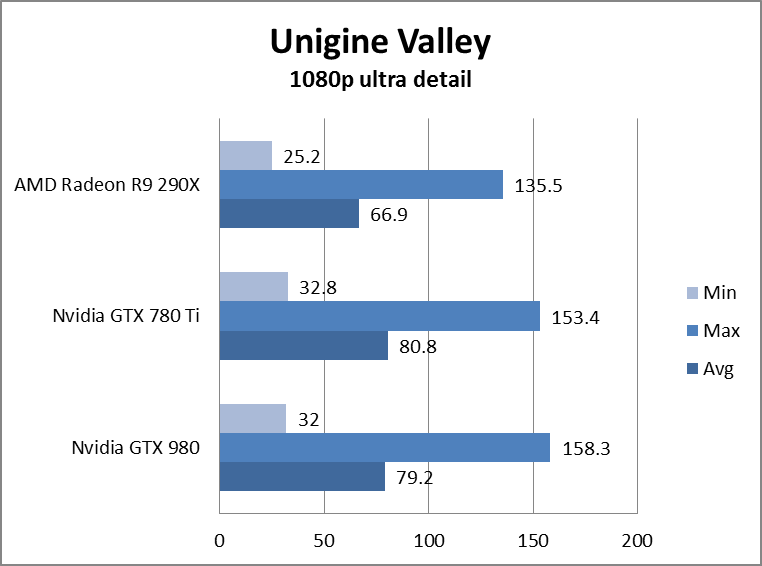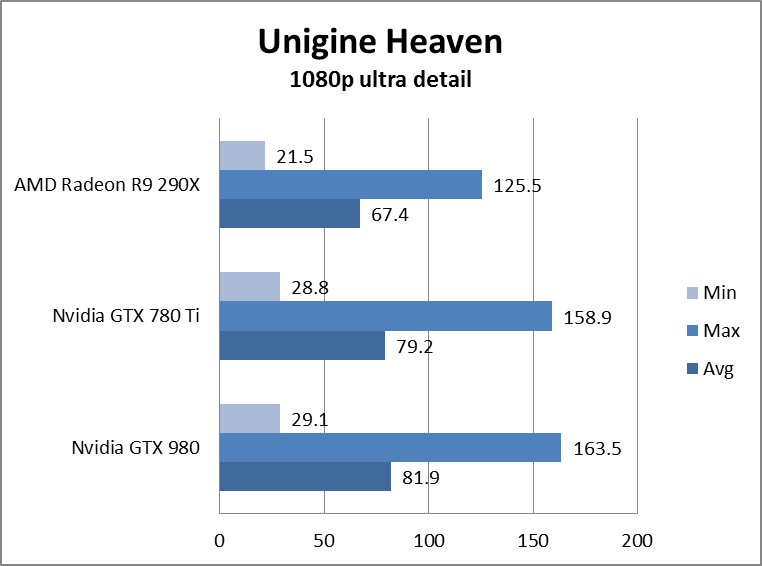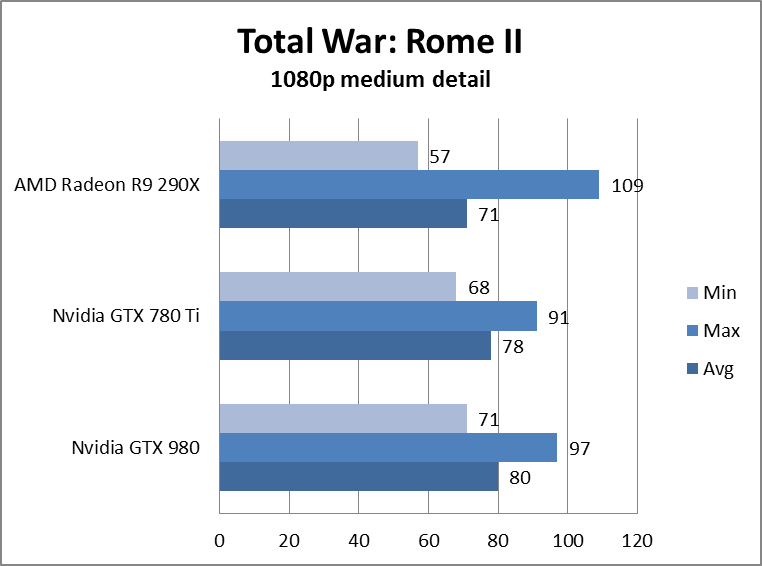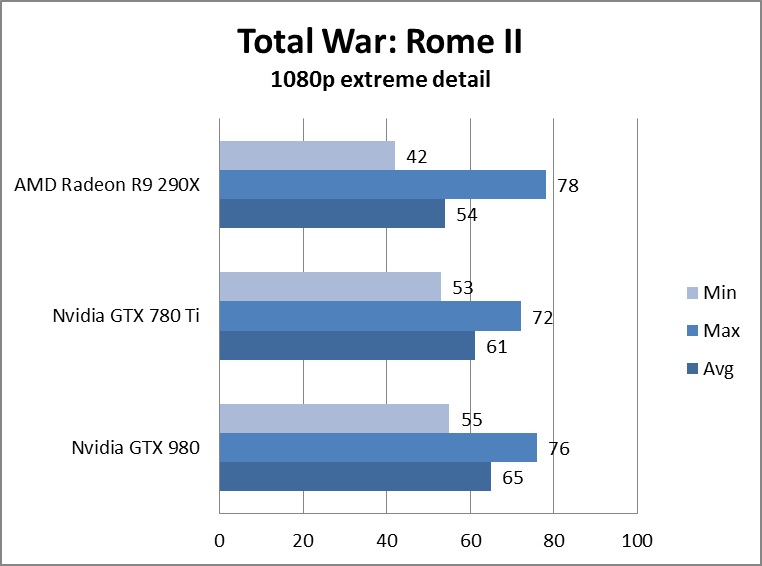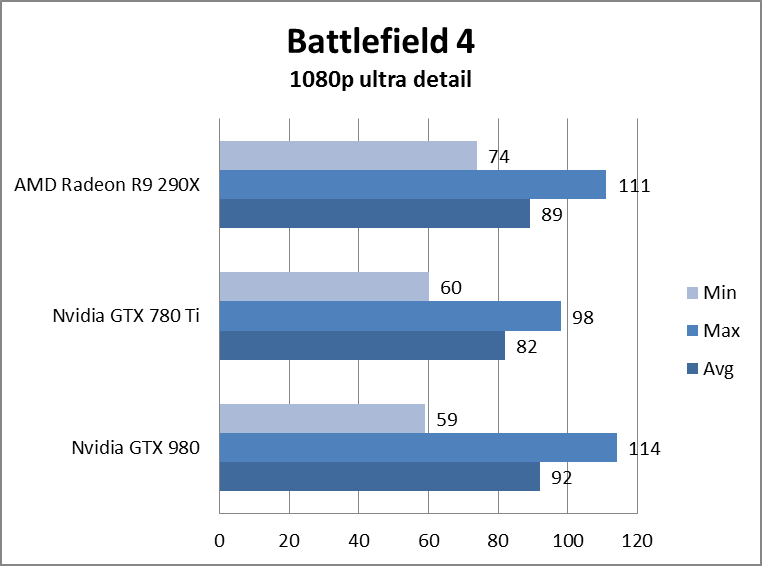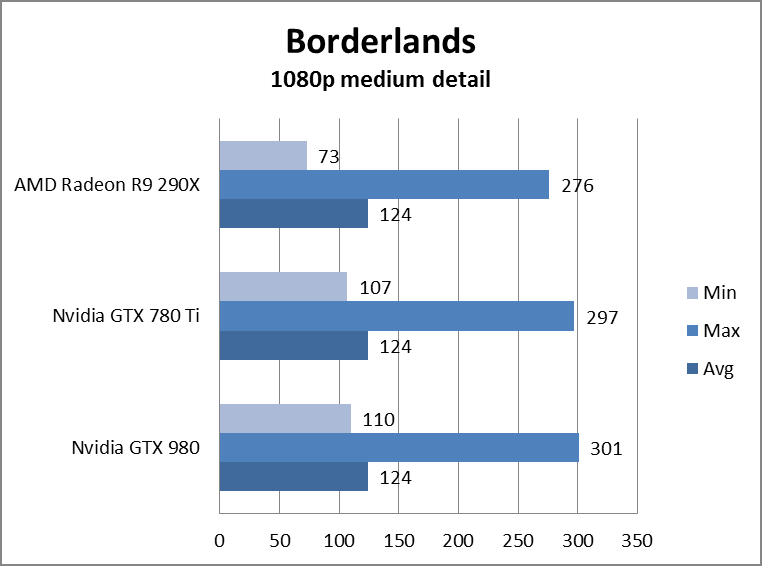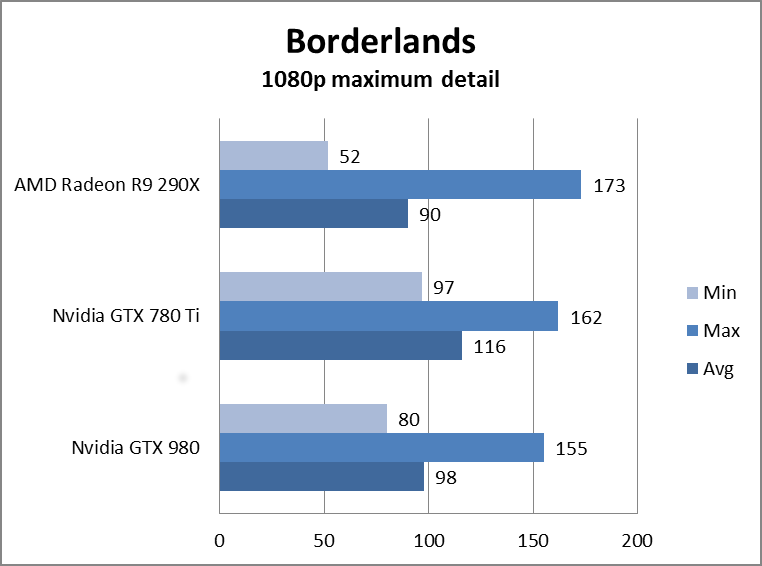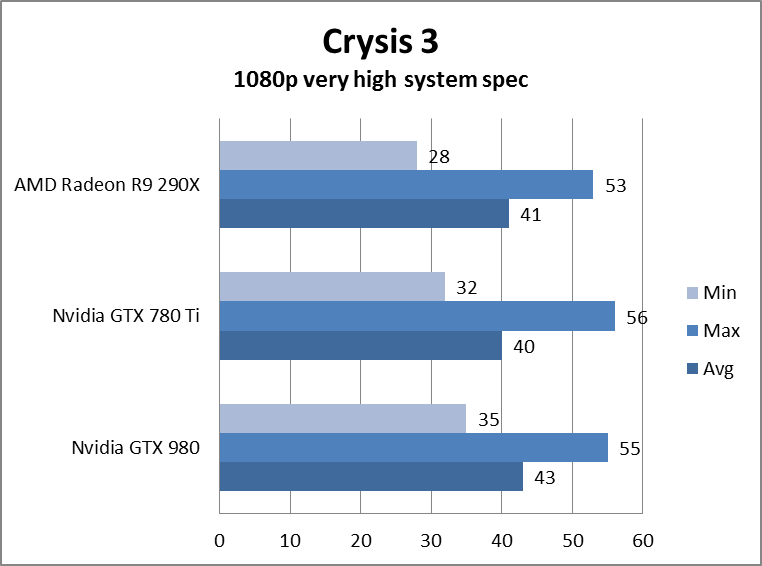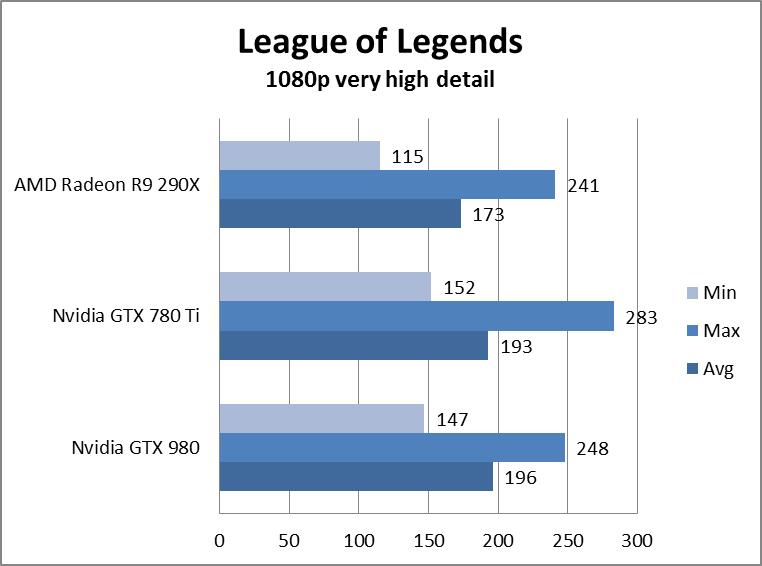Nvidia’s GTX 980 offers excellent performance along with the lowest power draw we’ve seen from a flagship video card.
PC enthusiasts who have been keeping track of the highly competitive graphics card war between AMD and Nvidia have come to expect a new mainstream, flagship card about once a year. Since the March 2010 release of the GeForce GTX 480, Nvidia has released three new flagship single-GPU cards (more, if you count the higher-clocked Ti variants), and each has appeared within a year of its predecessor.
This trend was broken in 2014, however, as the expected GTX 880 never came to market. Instead, Nvidia got by with the GTX 780 Ti, which used the same architecture as the GTX 780, but boasted improved clock speeds, and added more cores. While the reasons for the delay are up for speculation, the simple answer is “because they could.” The GTX 780 Ti proved to be significantly quicker than the GTX 780, and generally exceeded the performance of AMD’s competing R9 290 line.
Now, Nvidia is finally releasing an all-new card, though it’s not called the GTX 880. Nvidia has decided to skip a number, and so we have the GeForce GTX 980. This marketing maneuver is probably due to the GTX 880M’s release in March of this year. Branding the desktop flagship card with a higher model number makes it clear that this component is not just a spin-off of existing laptop hardware.
For the moment, at least, this card has no direct competition. Rumors indicate that AMD will release a new premium Radeon card later this year. For now, the red team has to get by with an aging lineup.
Meanwhile, Nvidia is discontinuing the GTX 780 Ti, 780 and 770, leaving the $549 GTX 980 as the company’s undisputed flagship card.
So, does this new entry follows its predecessor’s lead to become the new king among single-GPU cards?
Maximum Maxwell
The star of this show is undoubtedly Maxwell, Nvidia’s newest graphics architecture. Though it was first introduced earlier this year in the GTX 750 series, that entry-level card targets an entirely different type of buyer. The GTX 980 is the first hardcore graphics card to employ Maxwell architecture.
Maxwell was built to provide maximum performance while consuming minimum wattage, and it succeeds.
Nvidia says the architecture’s life began as a design for mobile products (i.e. laptops), rather than a chip for desktops. This is a new approach for the company, and for GPUs as a whole. In the past, new architectures were built with the most powerful systems in mind, then scaled down as needed. With Maxwell, that philosophy was turned on its head. Nvidia believes that it’s easier to start small and scale up, than it is to start big and scale down.
While some enthusiasts might bemoan this new practice, it makes sense given the wide variety of games that are available. Even so-called “AAA” games are no longer guaranteed to push the limits of graphics technology.
DirectX 12 is supported, though that’s not exclusive. The older Fermi and Kepler architectures are slated to have support for DirectX 12 added through future driver updates. A new lighting technique is enabled through Voxel Global Illumination. A new anti-aliasing method, dubbed Multi-Frame Sampled Anti-Aliasing, has been added as well. In theory, with these features, the GTX 980 can make games look better than other cards can. However, you’ll only see these features show up if and when game developers embrace them.
Another new and immediately useful feature in the GTX 980 is Dynamic Super Resolution. This technology improves visually lackluster games by rendering them at an extremely high resolution (beyond what your monitor normally displays), and then down-scaling the result. While it usually won’t make a night-and-day difference, it can sharpen blurry textures. It can also add detail to fine objects, like grass, and very distant characters. Gamers can automate the application of this feature through the GeForce Experience software and, unlike the other features enabled by Maxwell, this one works with most existing games.
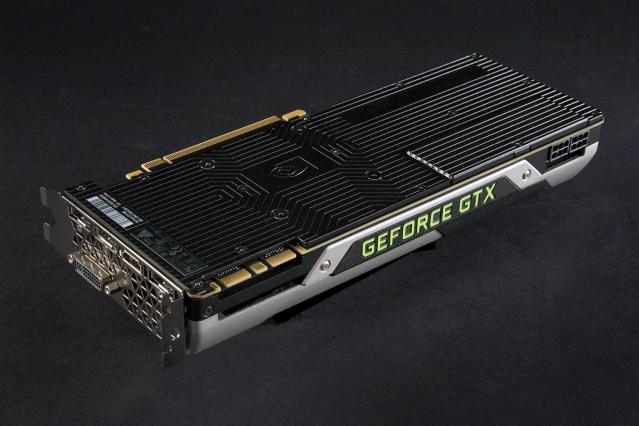
The real thrust of Maxwell’s focus, though, is power efficiency. This chip is not built via a smaller production process than its predecessor, so the green team’s engineers have been forced to focus on architecture revisions that result in more processing power from a given die size. A long list of changes has allowed this, but two in particular stand out.
The first is a reorganization of cores which groups them into smaller execution units. This enables more control over how resources are used, and results in less frequent activation of cores that aren’t needed to complete a task. Nvidia has also increased the level two cache to 2MB, which reduces the frequency of requests to the GPU’s DRAM. Together, these major changes (and countless other subtle tweaks) significantly improve efficiency over the previous Kepler architecture. Maxwell-based video cards can match the performance of their predecessors while consuming far less power.
A closer look at the GTX 980
Now that we’ve touched on Maxwell, it’s time to take a better look at the GeForce GTX 980 itself.
The GTX 980 boasts 16 execution units with a total of 2,048 CUDA cores. That’s a sizable downgrade relative to the preceding models. The GTX 780 has 2,304 cores in 12 execution units, and the GTX 780 Ti has 2,880 cores in 14 execution units.
This is an attractive flagship graphics card that should lure gamers with a GTX 600 series or Radeon 7000 series into upgrading.
Clock speeds are up though, as the GTX 980 features a base clock of 1,126MHz, and a boost clock of 1,216MHz. That’s a major bump from the 780 Ti’s base clock of 875MHz, and its boost clock of 928MHz.
The GTX 980 also makes some compromises with its memory. While it offers 4GB of GDDR5 RAM (the GTX 780 Ti has 3GB), the new card is restricted by a narrower 256-bit memory interface. The result is 244.5GB/s of bandwidth, which is down from the GTX 780’s 288.4GB/s, and the GTX 780 Ti’s 336GB/s.
In real-world use, increasing RAM while reducing bandwidth is more likely to impact GPU-compute applications than games, so the GTX 980’s configuration arguably places greater emphasis on gaming than the older cards do. That said, it’d be great if Nvidia offered high bandwidth and more raw memory. Perhaps we’ll see that in a future GTX 980 Ti.
The new card looks almost identical to the GTX 780 Ti, though the GTX 980 adds a metal back-plate over the PCB like the GTX Titan, rather than leaving it exposed. A portion of the back-plate is removable, and Nvidia recommends that you ditch it if you plan to use three or more of these cards together in a single PC. Other than that, the differences are few.
The GTX 780 Ti and 980 are equal in length, and most enthusiasts would have a hard time telling the two apart if they weren’t labeled. This is a good thing, as recent Nvidia reference designs have boasted an attractive metal finish, and a surprisingly quiet fan as well.
The difference that’s actually easy to notice can be found on the card’s I/O bracket. The GTX 980 offers three DisplayPort connectors, an HDMI 2.0 port, and DVI dual-link port. Four of these five choices can be used simultaneously. This is a major leap over the standard GTX 780 Ti, which shipped with two DVIs, but only one DisplayPort, and one HDMI connector. The inclusion of HDMI 2.0 is notable as well, as it’s the only version of the standard that can handle 4K video at 60 frames per second.
Two 6-pin PCI Express power connectors are used to deliver juice to the card, but the thermal design power has decreased to only 165-watts. That’s much lower than the GTX 780 Ti, which has a TDP of 250-watts. These numbers match up with the efficiency-oriented design of Maxwell, but it’s sure to make enthusiasts a little worried. The GTX 980’s specification sheet isn’t impressive, and it’s dramatically reduced power draw means that the new architecture has to work hard to keep up with Nvidia’s outgoing models.
Benchmarks
Now that we’ve examined Maxwell and the GTX 980’s innards, we’ll now take a look at benchmark results. We begin with 3DMark, which is a synthetic test that emulates a variety of graphics processing workloads.

Here, we see that both the Cloud Gate and Fire Strike tests offer solid differentiation between the three cards we tested. AMD’s Radeon R9 290X is far behind the GTX 780 Ti, which itself is far behind the GTX 980, particularly in Fire Strike. Nvidia’s new card is off to a strong start.
Next up is Unigine’s Valley benchmark. This test loop features scenic vistas across a mountainous landscape, making it a good stand-in for the workload demanded by a open world games.
While we see a large gap between the Radeon R9 290X and the Nvidia cards, the GTX 780 Ti actually comes out on top by a hair, beating the GTX 980’s average of 79.2 FPS by roughly a frame and a half with detail set to Ultra. This result won’t please gamers who thought the GTX 980 might move the standard of high-end performance significantly forward.
We complete our roundup of synthetic tests with Unigine Heaven, which is a benchmark that features extremely detailed buildings and objects. The 290X inches a little closer with the test set to Medium, but the distance between each card is generally the same when it comes to average frames per second.
In the Heaven benchmark, the GTX 980 retakes the lead with an average of 81.9 FPS with detail set to Ultra. That’s barely two frames ahead of the GTX 780 Ti, however, so Nvidia’s new card isn’t exactly leaving its older brother in the dust. Meanwhile, AMD’s Radeon R9 290X lags behind Nvidia’s offerings, averaging less than 70 FPS.
Real world gaming tests
The results of the synthetic tests aren’t conclusive. While the GTX 980 is quick in 3DMark, it only breaks even with the GTX 780 Ti in the Unigine tests. Let’s see if real world gaming tests resolve the tie.
Total War: Rome II
We begin with Creative Assembly’s latest strategy game, a title that can be surprisingly demanding because of its massive scope.
As you can see, the GTX 980 leads here, but not by much. The new card averages just four FPS more than the GTX 780 Ti when detail is set to Extreme, which is the game’s highest preset. The AMD Radeon 290X lags behind slightly with an average of 54 frames per second. The results are a bit closer at Medium, but the 980 still maintains its slim advantage.
Battlefield 4
This popular first person shooter is considered to be one of the most attractive games on the market, and features destructible environments. Let’s see if the GTX 980 can pull further ahead here.
The GTX 980 scores a more convincing victory at both Medium and Ultra detail here. The Radeon surged forward as well, however, earning a surprising second-place finish at the Ultra preset that’s only three frames behind the GTX 980. That’s good news for AMD, as the R9 290X generally retails for $100 less than the GTX 980 does.
Borderlands 2
Though it’s no longer graphically demanding, this game’s use of the Unreal 3 engine and moderate detail (even with the game visuals set to maximum) makes it a good stand-in for how the 980 will perform with older 3D games.
In this game, the 780 Ti keeps very close pace with the GTX 980 at Medium detail. At Maximum, it actually beats it by significant margins. The Radeon R9 290X, meanwhile, falls behind as detail is turned up. All three cards run Borderlands 2 smoothly, however. Unreal Engine 3 can’t challenge modern flagship graphics cards at 1080p resolution.
Crysis 3
Though it’s about a year old, Crysis 3 is still one of the most demanding titles around. When wondering how powerful a graphics card is, gamers always want to know whether it can run Crysis 3. So here’s how the GTX 980 handles this beast.
The gap between these competitors is close at both detail settings, and particularly at Very High, where the average for the entire field is separated by just three frames per second. Even the GTX 980 hits an average of just 43 FPS, which is disappointing. Gamers still can’t enjoy this title at 60 FPS at Very High detail with one single-GPU video card at 1080p.
League of Legends
League of Legends is not a demanding game, but it is one that relies on extremely smooth play. The high framerate also tends to amplify differences between cards, so this could be where the GTX 980 gets a major victory.
Despite our expectations, the GTX 980 basically ties the GTX 780 Ti. A gap of three frames per second isn’t noteworthy in a game that runs at nearly 200 FPS with details maxed out. Both Nvidia cards beat the Radeon R9 290X by a fair margin, though the Radeon’s average of 173 FPS is hardly lackluster.
Performance conclusions
Our benchmark test results indicate that the GTX 980 is generally more powerful than the GTX 780 Ti, but only by a small margin. This may disappoint gamers who were hoping that Nvidia’s new card would push the boundaries of single-GPU performance forward. It now seems we’ll have to wait for the GTX 980 Ti, or AMD’s next Radeon, to see any major changes. With that said, the GTX 980 can be around $250 cheaper than the GTX 780 Ti. With the GTX 980, gamers get new features and better performance at a lower price, and we count that as a win.
However, the Radeon R9 290X performed strongly too. While it fell behind in our tests at times, it gave the GTX 980 a big fight in Crysis 3 and Battlefield 4, which are the most demanding games in our test suite. We think AMD has weaved some driver magic to make this possible, as initial reviews of the 290X did not indicate performance that was this good.
Quiet the performance
Maxwell was built to provide maximum performance while consuming minimum wattage, and it succeeds. At idle, we measured a total system power draw of 57.8 watts, while that number rose to 67 watts with the GTX 780 Ti installed. At full load, total draw was pegged at 250 watts, which is almost 100-watts less than the 349-watt draw we got with the 780 Ti.
The GTX 980 is affordable, efficient, and remarkably well built.
The numbers speak for themselves. Nvidia has managed to provide excellent performance along with drastically reduced power consumption.
Low draw directly translates to less heat generated. As a result, the GTX 980’s fan never had to work hard. At idle, we measured 37.3 decibels of noise. At load, we measured an astoundingly low 39.1dB. Meanwhile, our test system emitted 43.1dB with the GTX 780 Ti installed. The difference between the new card and the old Ti is apparent even without a decibel meter handy.
Conclusion
The GTX 980’s name might lead buyers to think that it provides a large performance improvement over the outgoing GTX 700 series flagships. That’s not the case.
As our test results show, the new card is slightly faster than the GTX 780 Ti, but the gain is often no more than a few frames per second. Gamers who already have a GTX 770, 780 or 780 Ti should hold onto their cash, and that goes for owners of Radeon R9 290 cards as well.
In fact, the Radeon R9 290X proved its salt in our tests, beating the GTX 780 Ti in some benchmarks. We found the results surprising. In past reviews, the 290X didn’t prove to be this capable.
Since then, however, both sides have released driver updates. The Radeon R9 290X can’t beat the GTX 980, and it consumes far more power (the TDP is 290 watts, which is nearly twice that of Nvidia’s new card). However, it’s available for around $450, making it significantly cheaper compared to the GTX 980.
Yet, Nvidia’s latest high end graphics card is an excellent buy. The GTX 980 provides a slight improvement over the 780 Ti for at least $50 less (the cheapest 780 Ti cards cost around $600). Plus, it clearly defeats the 290X in performance, if not bang-per-buck. It also offers drastically lower power draw, and remarkably quiet operation compared to previous flagship cards from both companies. This is an attractive flagship graphics card that should lure gamers with a GTX 600 series or Radeon 7000 series into upgrading.
You should buy the GeForce GTX 980 if you want the best single-GPU graphics card on the market. Nvidia’s GTX Titan Black may be quicker, but at $1,000, it’s more of a money trap than a viable alternative. The GTX 980 is affordable, efficient, and remarkably well built. OEM vendors will likely improve it further, introducing quicker variants with nearly silent coolers. AMD may be able to provide competition when the anticipated R9 390 arrives later this year. Until then, Nvidia’s new GeForce GTX 980 is the only sensible choice for hardcore gamers.
Score: 
Highs:
- Excellent performance
- Great port selection
- Works quietly
- Low power draw
- Competitively priced
Lows:
- Demanding games still aren’t smooth at 4K
- AMD-based competitors offer better bang for your buck
- Doesn’t set new standards for high-end performance


